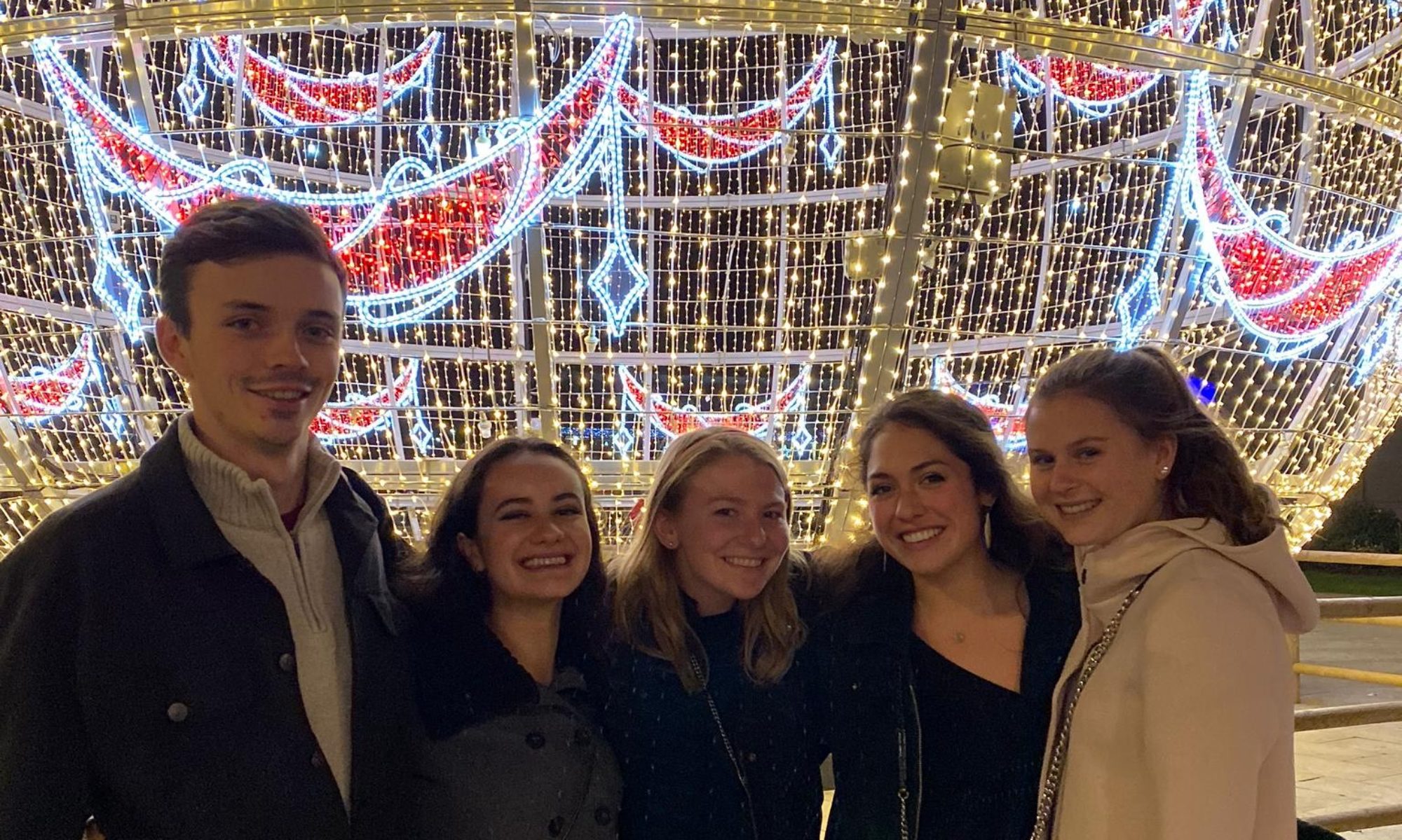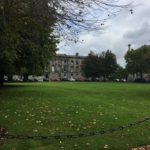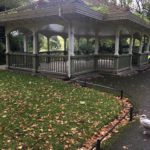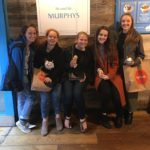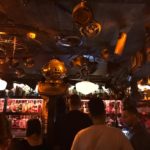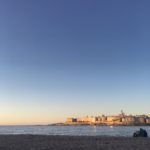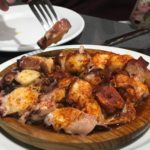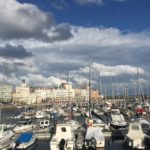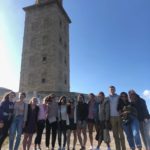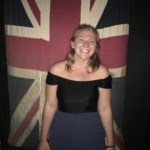Meals
It should come as no surprise that Spanish food is very distinct from American food. Although Spainiards do eat a lot of carbohydrates and bready foods, they eat fewer processed foods and smaller portions. People usually eat a small breakfast when they wake up, consisting of a piece of toast, a breakfast biscuit, and a cup of coffee. The most important meal of the day is lunch, or “la comida,” which is usually meat/fish, bread, and vegetables. La comida takes place between 2pm and 3pm, and people usually come home from work and school to eat lunch with their families. Finally, Spanish people eat a much lighter dinner around 10pm, which is usually just soup or ham and eggs.
Another interesting thing about the food here is that if you go to a restaurant and order a beer or wine, you also get a tapa with the drink. The tapas are pretty big and can be a plate of pasta, meatballs, croquetas, or tortillas. That’s a drink and a whole lot of food for only about ∈2!!
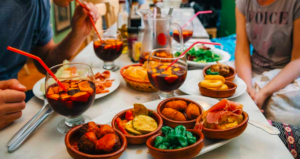
Introductions
It’s not just a stereotype–here in Spain, everyone greets each other with two kisses on either cheek. Both men and women partake in this salutary tradition, whether they are greeting old friends or people they’ve just met. One of my professors told us one of her most embarrassing stories: She was visiting a friend in the US, and when her friend introduced my professor to her husband, my professor went in to give him a kiss, and the husband, disgusted, pushed her away. My professor was mortified.
This custom definitely confused me at first, because I never knew who I should kiss and who I should not. Now, I just assume that I should greet everyone this way, so I am generally much better prepared to meet new people (I don’t yet initiate the kissing, though, just in case!)
Classroom Etiquette
Classes in Spain are very large lectures and tend to be very loud. For example, in my history class, students have full, loud conversations with each other while the professor lectures, and the professor seems to not notice. Initially, I thought that this was a phenomenon unique to the University of Coruña or to my classes. The other day, however, I was talking to an adult I know from the US, and she asked me what I thought of the “characteristically loud classrooms” in Spain. I find these classroom conversations very frustrating when I’m trying to understand what the professor is saying, but now that I know that they’re just another aspect of Spanish culture, maybe I’ll be less annoyed by them.
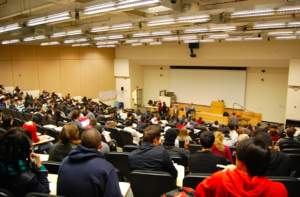
Transportation
Here in Coruña, many people do not have cars. Instead of dealing with the frustration of driving on the city’s narrow streets and finding parking garages, many people opt to walk or use the city’s public bus system, Transvias. Transvias has more than 20 different bus lines, most of which run every 5-10 minutes. The bus will take you anywhere you need to go in the city, including the university, which is the final stop on the UDC line. It costs ∈1.20 per ride, but costs less if you have the Transvias bus card.
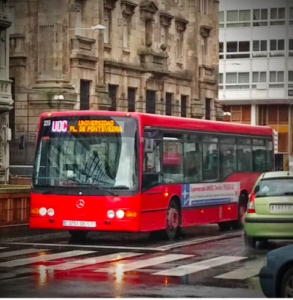
Fashion
People in Spain are extremely well-dressed, and rarely ever leave their homes without a stylish and coordinated outfit. University students tend to wear jeans or dress pants, skirts, or dresses to class. Often, the most defining parts of their outfits are their shoes– people wear eccentric, statement shoes like combat boots or really high platform sneakers. I don’t think I have ever seen anyone at the university wearing leggings or athletic clothes. In addition, many people have gelled/otherwise styled hair and often have blonde or bright colored highlights. Many people also have lots of piercings.
Amancio Ortega, the founder of the clothing store Zara, is originally from Coruña, so the store is, understandably, a very big deal here. Coruña is home to Zara’s largest distribution center, which is responsible for shipping clothing products to more than 90 countries around the world. Ortega also owns other staple Coruña clothing brands like Oysho, Bershka, and Pull and Bear, all within feet of each other in the Plaza de Lugo, Coruña’s shopping strip. If you step into any one of these stores, you can immediately see where Coruñans get their sense of style.
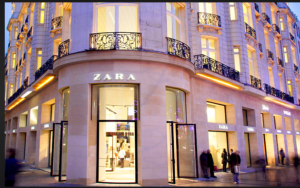
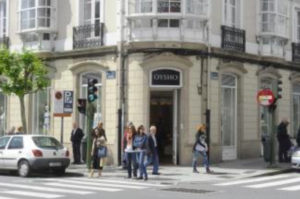
La sobremesa
Even though Coruña is the second most populated city in Galicia, the lifestyle here is very relaxed. In contrast to cities in the US, where people are constantly in a rush and eat meals quickly before they hurry back to work, people here enjoy the opportunity to “tomar algo” (enjoy a coffee, beer, wine, etc.–not the same as “salir,” which means “to go out” or “to party”). The slower pace of life contributes to the passionate, dynamic (and often loud) conversations that take place at any Spanish gathering.
Let me illustrate: The other day, during dinner, my host mother and two of my host sisters got into a heated argument over whether you can tell that someone in your class is younger than you just by hearing them speak. What started as a casual conversation quickly turned into a passionate debate, with my host mom and sisters yelling, speaking at lightning speed, and interrupting each other. Then, my third host sister got home, and she joined the debate, making the conversation even louder. This lasted for almost 45 minutes. If I had heard the conversation from another room, I would have thought that they were really fighting. I’ve come to learn that this is a normal part of the culture here; people are just passionate about their beliefs and enjoy each other’s company.
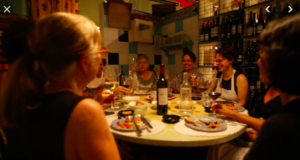
Authenticity
People here are very direct. In the US, people are so worried about being polite that they dance around saying what they mean. The Spanish people that I’ve interacted with are much less inhibited. People just come up to me and start talking. They ask where I’m from and what I’m doing in Spain and tell me “You speak Spanish well enough.” They aren’t afraid to tell you what they think. A few days ago, my host mom said, “I’m not saying you’re fat, but you need to weigh yourself,” referring to all of the bread in my new diet here. Another girl from Holy Cross’ host mom saw her nose piercing and remarked, “I like the other side of your face more.”
There are striking cultural differences between the US and Spain, but I think that Spanish people’s authenticity makes it a little bit easier to process the culture shock. They’re never pretending, so you know that what they say is genuine, and, most of the time, comes from a good place.

